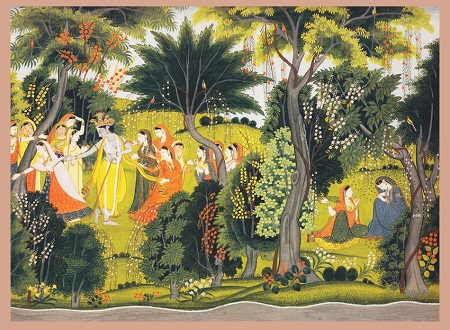“Art cannot be described, but expressed.”
It is evident that we are expressing our self through art since we used to live in caves. The history of Indian art itself has a long journey from ancient to modern art. We have preserved some of the paintings, sculptures, murals and architectures among the available art effects from different places of India. Along with this, we have cultural heritage, folk and classical dance history in itself.
We also have several painting styles that had been developed in India, like Madhubani Art, Worli Art, Kalighat Paintings, Tribal Art, Kalamkari Style of Painting, Tanjore Pantings, Rajasthani Paintings and Pahari Paintings. Each style has a different painting effect in itself, through which we can differentiate the style easily. The Indian styles of art has also been developed region wise, so we can also recognize the art through regions: like Worli art belongs to western part of India (Maharashtra), Madhubani style has been developed in Bihar, Kalighat painting style was developed in West Bengal, and the Mughal miniature art has been developed in Northern part of India (Rajasthan). The Kalamkari and Tanjore style paintings belong to Tamil Nadu, the Southern part of India. The Pahari art style has been developed in the Hill area of Himachal Pradesh and Kashmir.
As the area of Indian art is so wide to discuss, here let’s confine our discussion to one of the contemporary Indian painting styles of India, ‘The Pahari Miniature Art’.
Origin of Pahari Miniature Paintings:
Before the Mughal Empire entered India, there were many painting styles flourishing in the country. Once the Mughal Artists came in, different styles with a mixture of Indian and Mughal art styles came into picture. Pahari miniature paintings are one example of such styles. It is the mixture of three main style of Indian Art: Indian folk art, Rajasthani art and the Mughal miniature art style.
During this Mughal period between 17th and 18th century, different Indian art styles inspired by Mughal art were practiced at different parts of India. We had a Mewar school of Art which is known for Rajasthani miniature art and also we had Kangra School of Art at Himachal Pradesh, where they were developing the Pahari miniature art. The Pahari miniature art had a unique style of illustration, coloring style and composition. The credit goes to the “Nainsukh” and his family for making this art style available for us. He was the main artist during that period to develop the Pahari miniature art style.
Theme of the Pahari Miniature Paintings:
Theme of the paintings majorly belongs to mythological concepts that are based on the Hindu God and Goddesses, especially Lord Krishna and his leela (activities). We can see the paintings of Krishna playing with the Gopies (Village woman called Gopy), cows and friends. We can also see him in fighting scenes with the devils, as described in some Holy books.

Composition:
We can see the beautiful flourishing hills in the background of some of the paintings, which are decorated with green lush trees, flowers and rivers. The paintings are also decorated with flying birds, animals, and mountains with grass. The paintings have group compositions in them and also have some portraits with some other objects kept or standing with the figures. The trees in the background have detailed work, with leaf textures on them, flowers and some other ornaments.
Coloring and Illustration Style:
In the paintings, the face of the profile figure generally has big long eyes. It has attractive portraits with sharp features, and slim and sleek figures. Though the Artists had tried their hands on drawing different faces, we can see similarity in features in some of the group compositions. The color harmony can be seen in the background. We can observe the prosperity of that region by seeing the hills and trees painted with different shades of green, as the valley decorated with natural ornaments.
The flat color Background is separated from the Subject by using a contrast color. The colors used in the paintings are totally organic, extracted from the plants and natural substances. The green color was extracted from the leaves, other different colors have been made with flowers and colored stone, and the white color was made from lime stone, which is also used to make the background smoother.
Pahari miniature paintings are well known as an Indian art around the world. This is a beautiful style of Indian Art that should be preserved. People around India are trying to safeguard this valuable art in different ways for future generations to celebrate it. Let’s also work towards preserving this wonderful art by spreading it and by practicing it.
Image Courtesy: https://kaliedoscopeofmylife.wordpress.com; www.liveauctioneers.com